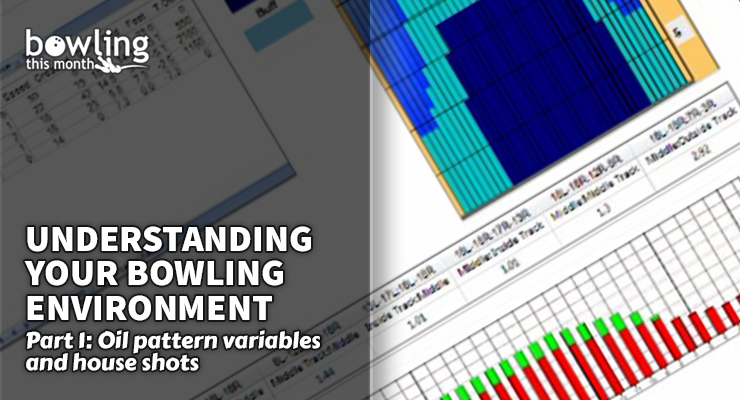You’re bowling on a 38-foot pattern. You use the “Rule of 31” to establish that your ball should come out of the pattern on board 7, giving you a breakpoint around board 6. You take out your benchmark ball, but it doesn’t get back enough. No problem…just try something a bit stronger. Flat 10 city. Next, you try a pearlized ball, and all you get is over/under. What’s going on? This should be working!
Unfortunately, when it comes to lane play, there are so many variables that there are no simple rules. The Rule of 31, where we take the pattern length and subtract 31 from it to get the board number where the ball should exit the pattern, is a great starting point to figure out your options—one that I’ve used many, many times over the years. However, it is not something to follow blindly. There are simply too many other factors in the environment to consider.
Over this new series of articles, I will attempt to break down these variables and give some general guidelines for lane play on house shots, short, medium, and long patterns. As we’ll see, simply classifying patterns by their length can be misleading in itself, but it’s the most obvious designation, so it’s how I’ll organize these articles.
We’ll start by discussing oil pattern variables, and then we’ll look at house shots to get this series started.
Oil pattern variables
For the purposes of this article, we’ll limit ourselves mostly to only discussing pattern variables in an attempt to simplify this web of confusion. As we address different lengths of patterns, we’ll add in a few more environmental influencers, such as the lane itself.
To get started, we’ll just focus on the “big five” oil pattern variables: length, ratio, oil volume, taper, and oil type. We’ll discuss each of these briefly here and then go into more detail as we break down the different kinds of patterns, any specific effects of each of these variables, and lane play considerations based on them.
Length
In the minds of many, length has become the predominant factor in determining lane play strategy. At youth tournaments, I’ve heard parents who’ve never thrown a bowling ball discussing the length of the pattern and the accompanying strategy with absolute certainty. As the most obvious piece of information on a lane graph, it’s certainly the easiest ...
This article is only available to Bowling This Month subscribers. Click below to get instant access to this article and all of our other premium instructional content.
Subscribe to Bowling This Month
Already a Bowling This Month subscriber? Click here to log in.
